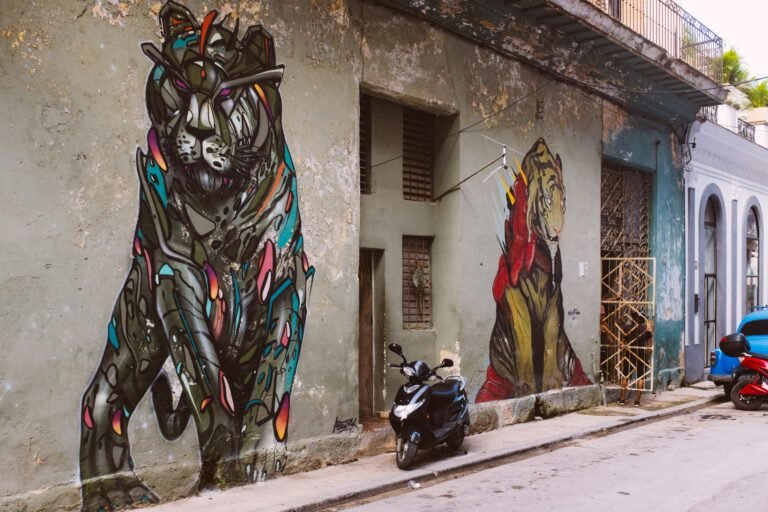Street Art History in Cuba
Street art in Cuba is born from the need for expression among artists who initially lacked access to conventional exhibition spaces. However, it was during the revolutionary period (1953-1959) that street art took on a new dimension, becoming a powerful tool to convey political and social messages.
During this time, street artists found in the streets of Havana, Santiago de Cuba, and Trinidad a public canvas to depict their ideas and reflections on the revolution and the society they lived in. Murals and graffiti became an alternative means of expression, challenging conventions and taking art beyond the confines of traditional galleries.
Today, street art in Cuba has undergone constant evolution and notable diversification. Murals and graffiti adorning the streets of these cities bear witness to the vibrant creativity and innate talent of local artists. These visual elements not only beautify urban environments but also tell stories, capture the essence of everyday life, and reflect the changing social and cultural dynamics of Cuba.
Mural Routes: Exploring Cuban Street Art
An exciting way to discover street art in Cuba is by following mural routes in major cities. These routes take you through the most vibrant neighborhoods, where you can appreciate a wide variety of styles and themes in the murals.
In Havana, for example, you can follow the Fuster Murals Route, which will lead you through the Jaimanitas neighborhood, where artist José Fuster has created an open-air museum. His colorful murals, mosaics, and sculptures transform the streets and facades of houses into a unique artistic expression. Besides being a visual delight, this route offers an authentic immersion into community life and the palpable creativity of its residents.
In Trinidad, you can visit the Benito Ortiz Universal Art Gallery, committed to promoting Trinidadian art. It features three temporary exhibition halls where national and foreign visitors enjoy the best of local art. Throughout the year, the gallery hosts prominent events such as Municipal Salons, craft festivals, and the Plastic Arts Biennial, bringing together professional and folk artists. Guided tours, talks, and encounters with artists provide an educational and enriching experience.
In Santiago de Cuba, the Carnival Route will immerse you in vibrant murals celebrating the carnival tradition in the city. From artistic representations of parades to visual expressions of festive music and dance, these murals capture the essence of Santiago’s carnival.

Exploring these mural routes will allow you to enjoy Cuban urban art and they will provide an opportunity to get to know local neighbourhoods and discover the everyday life of Cubans.
Collaboration Between Local Artists and Communities
One of the most outstanding features of street art in Cuba is the collaboration between local artists and communities. Many murals and graffiti result from community projects where artists work together with residents to beautify their neighborhoods.
These collaborations not only create a sense of belonging and pride in communities but also generate economic opportunities for local artists. Sustainable tourism plays a significant role in this aspect, as visitors participating in mural routes and supporting street art contribute directly to the development of local communities.

Importance of Street Art as Cultural Expression
Street art in Cuba is a powerful form of cultural expression. Through murals and graffiti, artists address themes such as identity, history, politics, and everyday life on the island. These artworks reflect the diversity and cultural richness of Cuba and are an integral part of its artistic heritage.
Additionally, street art is accessible to everyone, located in public spaces and available for free appreciation. This makes street art an inclusive form of art, reaching a broad audience and promoting citizen participation in culture.

